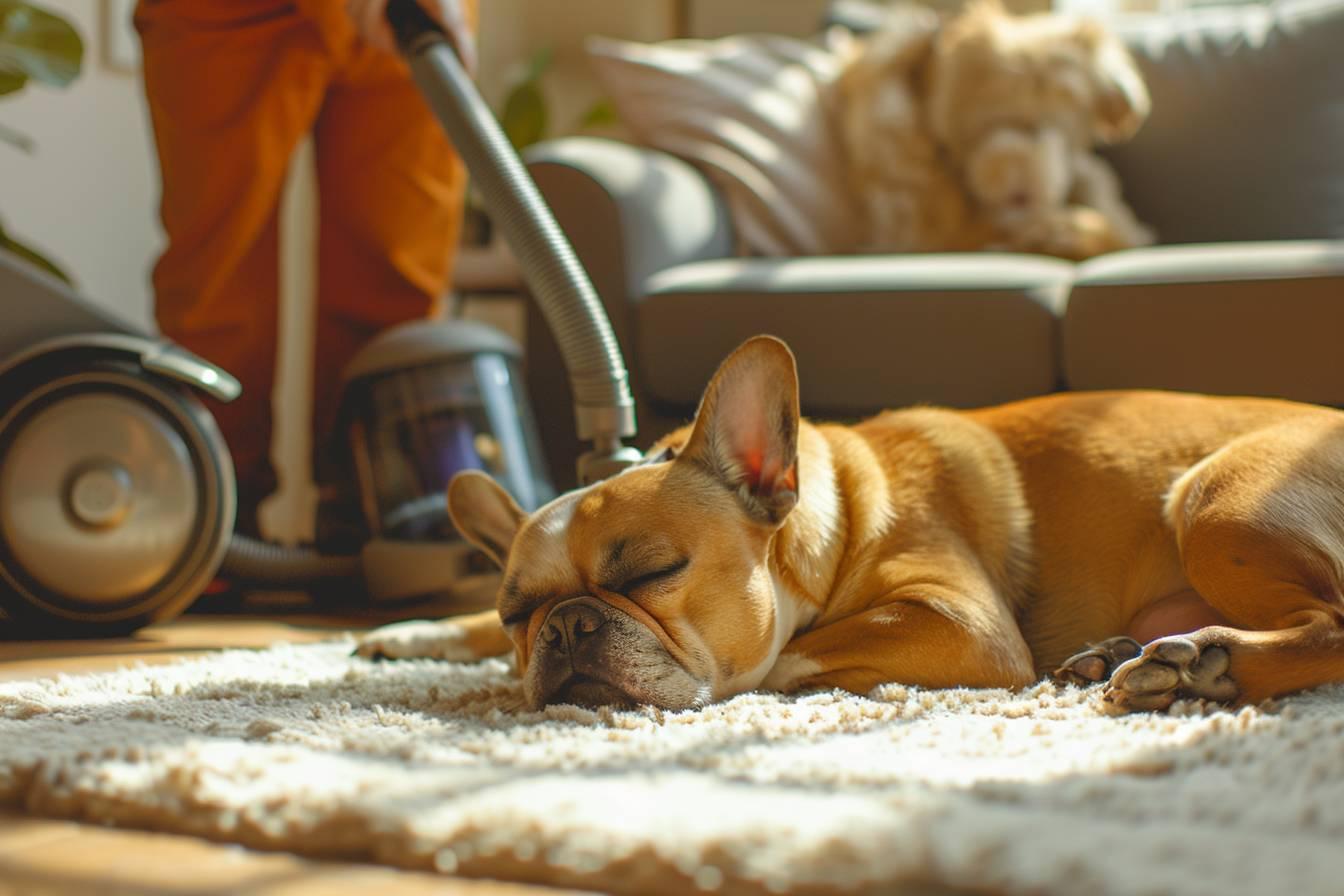Dealing with a flea infestation can be a frustrating and time-consuming process. These tiny parasites not only cause discomfort to our beloved pets but can also pose health risks to humans. In this comprehensive guide, we’ll explore 10 effective methods to eliminate fleas from your home and pets, ensuring a pest-free environment for all.
Understanding flea behavior and life cycle
Before diving into elimination techniques, it’s crucial to understand the enemy we’re dealing with. Fleas are small, wingless insects that feed on the blood of mammals and birds. They’re known for their exceptional jumping abilities, allowing them to move swiftly between hosts.
The flea life cycle consists of four stages :
- Egg
- Larva
- Pupa
- Adult
Adult fleas lay eggs on their host, which then fall off into the environment. These eggs hatch into larvae, which feed on organic debris and flea feces. The larvae then spin cocoons and enter the pupal stage. Finally, adult fleas emerge from the cocoons, ready to find a new host.
Understanding this life cycle is crucial because effective flea control targets all stages, not just adult fleas. This comprehensive approach ensures long-lasting results in your battle against these persistent pests.
Top 10 methods for flea elimination
Now that we’ve grasped the basics of flea biology, let’s explore the most effective ways to banish these bloodsuckers from your home and pets. These methods range from natural remedies to chemical treatments, providing options for every preference and situation.
- Thorough vacuuming : Regular and intensive vacuuming is your first line of defense. Focus on carpets, upholstery, and pet bedding. Don’t forget to dispose of the vacuum bag in a sealed plastic bag outside your home.
- Steam cleaning : High-temperature steam can effectively kill fleas in all life stages. Use a steam cleaner on carpets, furniture, and other surfaces where fleas might hide.
- Diatomaceous earth : This natural, non-toxic powder can dehydrate and kill fleas. Sprinkle it on carpets, pet bedding, and yard areas, then vacuum after a few days.
- Flea combs : Regularly comb your pets with a fine-toothed flea comb. Dip the comb in a mixture of warm water and dish soap to kill any caught fleas.
- Herbal remedies : Certain herbs like rosemary, eucalyptus, and lavender can repel fleas. Create a natural spray or add these to your pet’s bath.
- Chemical treatments : Topical treatments, oral medications, and flea collars can provide long-lasting protection for your pets.
- Flea bombs or foggers : These can be effective for severe infestations but should be used cautiously and according to instructions.
- Professional pest control : For persistent problems, consider hiring a professional exterminator who can apply targeted treatments.
- Washing fabrics : Regularly wash pet bedding, throw rugs, and other fabric items in hot water to kill fleas and their eggs.
- Yard treatment : Don’t forget the outdoors. Treat your yard with pet-safe insecticides or natural alternatives to prevent reinfestation.
Remember, consistency is key when implementing these methods. A multi-pronged approach targeting both your home environment and your pets will yield the best results.

Natural vs chemical flea control : pros and cons
When it comes to flea control, pet owners often find themselves torn between natural and chemical solutions. Both approaches have their merits and drawbacks, and understanding these can help you make an informed decision for your specific situation.
| Method | Pros | Cons |
|---|---|---|
| Natural |
|
|
| Chemical |
|
|
While natural methods like diatomaceous earth and herbal remedies are gentler on the environment and your pets, they may not be sufficient for severe infestations. On the other hand, chemical treatments offer powerful and swift results but come with potential risks and environmental concerns.
Ultimately, the best approach often involves a combination of natural and chemical methods, tailored to your specific situation. Consult with your veterinarian to determine the most appropriate flea control strategy for your pets and home.
Preventing future flea infestations
After successfully eliminating fleas from your home and pets, the next crucial step is prevention. By implementing a few simple strategies, you can significantly reduce the risk of future infestations and maintain a flea-free environment.
Regular pet treatments are the cornerstone of flea prevention. Whether you opt for monthly topical treatments, oral medications, or flea collars, consistency is key. Mark your calendar or set reminders to ensure you never miss a dose.
Maintain a clean living environment by :
- Vacuuming frequently, especially in areas where pets spend most of their time
- Washing pet bedding weekly in hot water
- Keeping your yard well-maintained, as fleas thrive in tall grass and shady areas
Consider using natural repellents in your home and yard. Plants like lavender, mint, and chrysanthemums can help deter fleas. You can also create a DIY flea-repelling spray using essential oils like eucalyptus, peppermint, or lemongrass mixed with water.
Regularly inspect your pets for signs of fleas, such as excessive scratching or visible flea dirt. Early detection can prevent a full-blown infestation. Use a flea comb during grooming sessions to catch any stragglers.
If you live in an area prone to flea infestations or have outdoor pets, consider year-round flea prevention. While fleas are most active in warm months, they can survive in homes during winter, making continuous protection important.
By combining these preventive measures with the elimination techniques discussed earlier, you’ll create a robust defense against these persistent pests. Remember, vigilance and consistency are your best allies in the ongoing battle against fleas.

